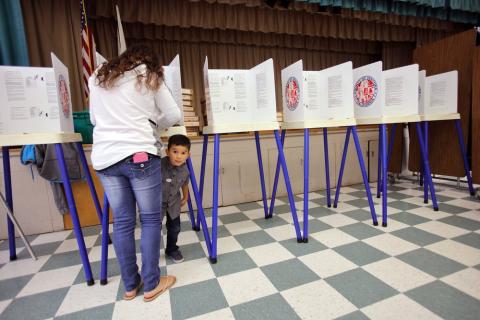In the wake of a toxic presidential election and bitter partisan divides in Congress on every major issue, Americans are rightly wondering what has happened to our ability to rise above politics and do what’s right for the nation. Social media is a convenient scapegoat, with its echo chamber that can make all news seem “fake” if differing from what our friends think
But blaming social media is a classic case of shooting the messenger. It wrongly assumes partisan polarization didn’t exist before Facebook and that mechanisms to communicate don’t always offer both promise and peril for seeking truth and solving problems. It also redirects our energy from what’s really broken: winner-take-all voting, vote-for-only-one rules with simplistic binary choices that don’t work in modern America.
Let’s break this down. First, our history with polarization dates back to the clash between John Adams and Thomas Jefferson. Slavery acted as an increasing wedge such that when Abraham Lincoln was elected, he won a majority of more than 50 percent of the popular vote in 15 states, but no votes in eight Southern states. The Civil War unsurprisingly started soon after.
In the late 1800s, partisan-driven voting records in Congress were very similar to what we see today. Those divisions lessened over the 20th century, particularly from the New Deal through the 1970s, but that era of more bipartisanship and overlapping ideologies across the parties created a false impression that this has been our norm.
Wedge politics grounded in use of race, gender, and culture increased division once again. By 1994, when Republicans ended a 40-year unbroken chain of control of Congress by Democrats, nearly all voters began putting partisan labels over individual character in deciding how to vote.
In 1997, more than 90 percent of congressional districts leaning to one party were held by that majority party. With fewer general elections in play, the power of primary voters grew — creating a vicious cycle that makes each party scarier to the other’s backers.
This, of course, wasn’t due to social media. Some people likely were wringing their hands at the impact of the printing press and Martin Luther’s Bible or pamphlets like Thomas Paine’s “Common Sense” that built support for the American Revolution. The newspaper industry in the 19th century often found readers by entering the partisan fray, and cable news programs for years have created 24-7 opportunities to feed at the partisan trough.
But fundamentally, means to communicate are just that: ways for people to share information. Whisper campaigns likely plagued our cave-dwelling ancestors, but that doesn’t means language was wrong. Books and pamphlets can divide us, but also have had massively positive effect on human understanding. The same goes for television, cable networks and radio.
With social media, it’s easy to spread lies, draw followers with inflammatory tweets, and hear only one side of a story. But the reverse is also true: it’s easier to expose lies, share thoughtful comments, and look for alternative views. It’s easier to come together and organize, whether in Cairo or Chicago.
What’s really dividing us is winner-take-all, binary politics. It’s easy to believe America’s voting rules have to be that way. But they don’t. More Americans are breaking out of vote-for-one limitations with ranked choice voting, as used in cities with more than 2 million Americans and likely in for most of Maine’s biggest elections next year.
You’re no longer limited to supporting one candidate with ranked choice voting. You can indicate backup second and third choices. If there’s a majority winner, that candidate wins. If not, the last-place candidate is out, their ballots are added to voters’ next choices, and the tally continues until one candidate wins more than half the votes. That means we can have more choices without dysfunctional outcomes and reward candidates who reach out to more voters.
As proposed in the Fair Representation Act, we can also change winner-take-all. Without changing the Constitution or size of Congress, the Fair Representation Act would create bigger districts electing more than one person and establish ranked choice voting to enable as many people as possible to help elect someone, including those in the minority.
One-party domination would end literally everywhere.
Having November elections always matter and electing more Manhattan Republicans and Oklahoma Democrats would create new opportunities to work across the aisle.
Social media has its downsides, but let’s support those seeking to make it work. And to really heal our broken politics, let’s get to the core problem: our broken voting rules.
Editor's note: This article originally published on Inside Source, and has been modified slightly for publication on IVN. It was republished with permission from the author.
Photo Credit: Joseph Sohm / shutterstock.com
